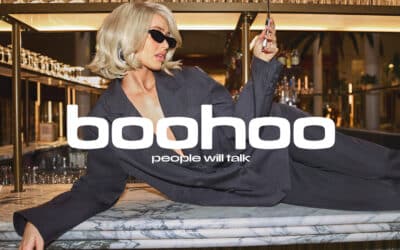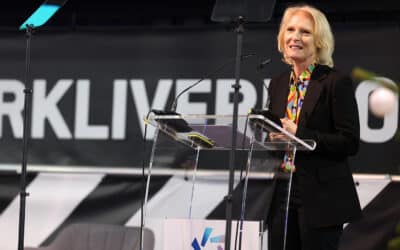Trish Tothova, Marketing & Sales Manager at Enjoy Digital share her insights on the Ecommerce landscape and how this year will earmark a bigger shift to online marketplaces.
The fundamentals of shopping have rapidly changed.
A 2020 worldwide study on consumer shopping behaviours found Amazon is now the top source of inspiration for online shopping. Over taking search engines, TV & advertising, social media, and other marketing avenues.
So, what does this say about the ecommerce industry?
To begin, worldwide retail ecommerce sales grew by a staggering 27.6% last year. In 2021 there is a further projected 14.3% growth, forecasting over £611bn in ecommerce sales.
We have seen brands such as Topshop, which had 510 shops worldwide, shut their doors after 30 years and move to online marketplace, ASOS.
Marketplaces are the new department stores
Debenhams has been bought out by Boohoo, Topshop sold to ASOS and countless other stores such John Lewis, Marks & Spencer’s and House of Fraser have seen permanent store closures across the country.
And we can’t solely accuse the pandemic.
2019 reports showed a 20% increase in retail ecommerce growth worldwide, which is only 8% short of 2020’s statistic.
Wayfair, a home improvement marketplace, was the second leading vertical eCommerce company worldwide as of September 2020. With Ocado and Hello Fresh following behind, this also highlights the desire for online grocery shopping too.
The UK holds hundreds of thousands of registered retail businesses, and relying on stand alone sales is perhaps missed opportunity.
Whilst Amazon has the monopoly on quick fire delivery and low-price points, consumers are becoming more commercially aware of other marketplace options and their responsibility to support smaller businesses. The proof is in the numbers.
Consumers expect more free delivery from retailers
Consumer perceptions have altered due to large corporations offering free delivery and a small spend return.
The Future of Commerce Report 2021 by Shopify shed light onto the psychology of consumer shopping perceptions, showing that 59% of consumers say free delivery would improve their online shopping experience.
This same report also showed 75% of merchants who generated sales between March through September (2020) had free shipping enabled on their stores.
It offers a pause for consideration, although covering the cost of shipping may not be feasible, in the psychology shopping habits, would including the price into the cost of products offer an alterative solution? It is certainly food for thought in a highly demanding environment.
The rise of M-commerce
Mobile shopping, otherwise known as M-commerce, is an emerging style of eCommerce that deserves more attention. Not too long ago, Instagram, Facebook and Pinterest introduced their ‘buy’ button which allows shoppers to make a purchase on a brand’s profile page without having to leave the platform.
This style of ‘social shopping’ encapsulates the modern retail economy and the ease of user experience that many consumers are looking for.
As the high street becomes a quiet affair, the socialising aspects of instore shopping have been a neglected element in the eCommerce environment. However, slowly and eagerly it is being introduced by social media apps to offer a more collaborative way to shop online.
User experience audits for mobile sites are in much more demand and as a digital agency, we have seen a keen focus in optimising better for mobile experiences. User testing and research has proven to be an invaluable asset to many of our clients, as we find the golden nugget always lies in what the consumer is thinking.
Retailers should be optimising their digital strategy for higher conversion
As previously mentioned, social media is yet another platform for multi-channel selling so ecommerce businesses can compete with a wider audience.
But what has perhaps lagged in recent years is the level of integration between conversion rates and digital strategies.
Facebook’s algorithm rewards video content as audiences are more perceptive and attracted by this medium. Therefore, a creative output of your content may prove stronger to an audience which is growing more impatient to consuming information.
It’s a similar thesis to user generated content. Advertising has lost its trustworthiness over the years, and as we embark upon a larger online shopping presence, it will only prove easier if the digital content provided is also being developed by your own customer base.
People buy into people. That isn’t just an advocacy for influencer marketing, but for the real everyday people who feel remarkably important when you share their content and develop a stronger relationship.
Enjoy Digital will be speaking with Founder & CEO of onbuy.com, Cas Paton, on how to compete with Amazon and stay at the forefront of the buyers’ mind. Join Enjoy Digital for its fireside webinar on Thursday 25th Feb for free, to hear what Cas has to say. Sign up for the free fireside webinar.











